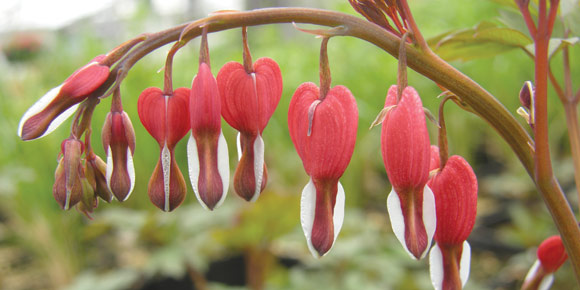To mulch or not to mulch, that is the question. Mulching is the practice of adding something to the top of the soil to prevent moisture loss, suppress weeds and help condition the soil.
Garden advice tends to run in trends, and one of these trends is the nostrum that you must mulch to save the planet or something. Yet, there are times, such as when we are having a particularly wet year, when this is bad advice. Then mulches can sour the soil, cause root rot, encourage slugs and smother plants by preventing the penetration of much needed air to root zones.
The best advice? Use your powers of observation. Mulching is good practice in dry to average moisture years, bad practice when it’s wet. If you used mulch the year before a particularly wet summer, use a rake to stir it up from time to time, introducing air to the soil below and being careful to pull the mulch away from plant stems. Too much mulch can also create media for an invasion of mushrooms. Sour mulch can give off an odour of alcohol, rotten eggs or vinegar due to anaerobic fermentation resulting in in the buildup of sulfides.
How thick to lay it on, is another issue. Mulch that is laid on too deeply is a bad idea. Remember, plant roots have to breathe and they also have to have access to new fallen rain or other irrigation. Mulch that is too deep can prevent moisture penetration just as it can prevent moisture evaporation from the soil. Either condition can inhibit growth. It is also important not to lay mulch too closely to the stems of your plants to prevent stem rot.
In addition to retaining moisture in the soil, some mulches can also condition your soil. Usually this is a good thing as long as the mulch is not overloading the soil with nitrogen, as in the case of heavy sawdust mulches or from using thick layers of grass clippings. These products break down very quickly and should be used judiciously. Too much nitrogen in the soil will give you a lot of leafy growth, but reduced flowering or fruiting and it will serve as an attractant to aphids. Too much nitrogen in lawns will thin out the turf and kill earthworms and other beneficial organisms.
Ground up or chipped and dyed industrial pallets are used to produce a mulch common on the market now, but if they are too finely processed you can encounter the same nitrogen overload issue. Do not lay on any finely processed products too thickly. These chips also breakdown quickly and may contain toxic ingredients. When using a finely cut mulch such as fine chips or even peat moss, keep the depth to one to two inches.
Rough cedar and other large barks are good mulches. They shade the ground conserving water and keeping roots cool. They break down slowly (protecting both your pocket book because they will probably last more than one or even two seasons and preventing too much nitrogen release). And they look good. Coarser mulches such as barks can be three to four inches deep.
River stone also looks good, but it can be a problem for plants by promoting hot soil. It would be best used in a drought-loving garden. Young trees are especially vulnerable to this treatment because the plastic landscape cloth that is usually laid under the stone can also smother the tree’s feeder roots, which grow just below the surface of the earth and need air as much as water to thrive. If you do adopt this option, aerate your tree roots by punching holes in the cloth with something like a crow bar.
Another potential problem with stone mulches is maintenance. It can be a challenge to clean when, eventually, the river stone gets invaded by weeds and dirtied by soil and leaves. If it’s very wet over a number of years, the stones can also turn mossy.
Just as with anything else in the garden, consider local conditions and use your best judgment before using mulch.
Dorothy Dobbie is the publisher of Manitoba Gardener and broadcasts a weekly radio show on CJNU 93.7 FM at 8:00 on Sunday mornings.



